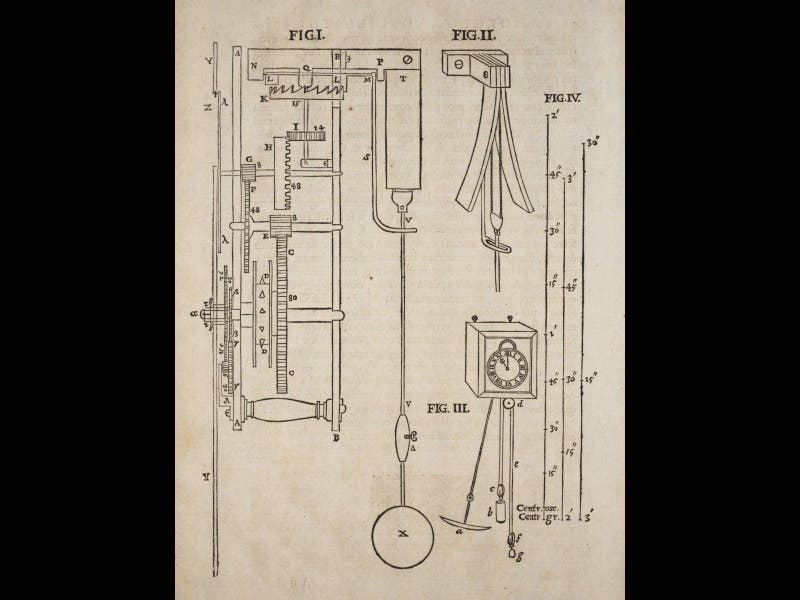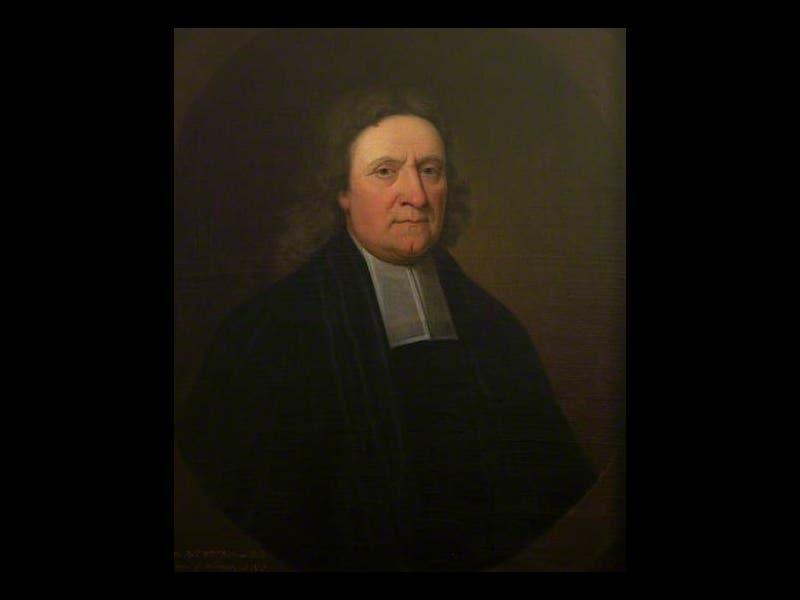Scientist of the Day - William Derham
William Derham, an English naturalist and clergyman, was born Nov. 26, 1657. Derham is best known as one of the founders of "natural theology", which is pretty well defined by the title of Derham's most influential book, Physico-Theology: Or, A Demonstration of the Being and Attributes of God, from his Works of Creation (1713). Natural theologians (the rubric would include Robert Boyle, John Ray, and Nehemiah Grew, as well as Derham) believed that one could learn about the Wisdom and Providence of the Creator by studying the Book of Nature, the indispensable companion to the Book of Scripture.
But Derham is also remembered for a completely different kind of book, The Artificial Clock-Maker (1696), a guide to building spring and pendulum clocks. The pendulum clock, the first really accurate timepiece, had been invented by Christiaan Huygens in the 1650s and was first described in print in 1673, but no one before Derham had written a nuts-and-bolts guide for constructing your own clock. He taught himself clock making by consulting the best English clock craftsmen, such as Robert Hooke and Thomas Tompion, and he conveyed his lessons so well that the book went through six editions in sixty years (including a German translation).
In 2012, Bruce Bradley curated an exhibition at the Library on the history of time-keeping, It's About Time, and he included Derham's Artifical Clockmaker as one of the exhibit items. At the time, we had only the third edition (1714) in the History of Science Collection, which was fortunate in a way, because the third edition has an engraved frontispiece that depicts a Huygens-style pendulum clock (see first image above). We have since acquired the first edition of 1696, which has no frontispiece, so it is nice to be able to display the two editions together (second image above). The third image above shows, for comparison, the first depiction of Huygens’ original pendulum clock, as it appeared in Huygens’ Horologium oscillatorium (1673).
Because Derham was a well-respected member of the Royal Society, he sat for an oil portrait at least twice. The more handsome is that which now hangs in the Bodleian Library at Oxford, painted by George White (see fourth image above).
Dr. William B. Ashworth, Jr., Consultant for the History of Science, Linda Hall Library and Associate Professor, Department of History, University of Missouri-Kansas City






![“Aurora Borealis,” hand-colored wood engraving by Josiah Wood Whymper, [Natural Phenomena], plate 2, 1846 (Linda Hall Library)](https://assets-us-01.kc-usercontent.com:443/9dd25524-761a-000d-d79f-86a5086d4774/0245ffcb-b70c-477c-8792-0a73ebd54eb2/Whymper%2011.jpg?w=210&h=210&auto=format&fit=crop)



